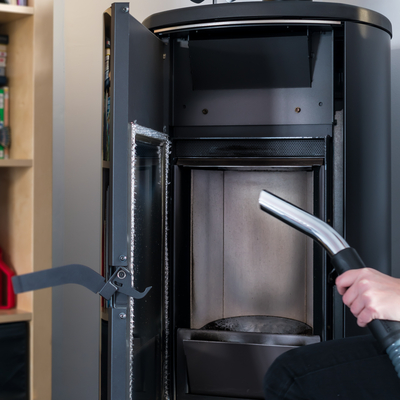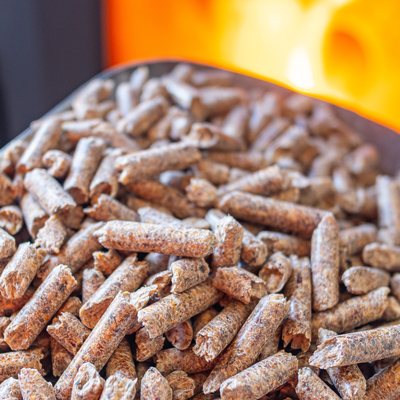
Quick Guide to Properly Maintaining Your Pellet Stove
A pellet stove is a fantastic addition to any home, offering efficient heating and an eco-friendly alternative to traditional wood-burning stoves. However, regular maintenance is crucial for keeping a pellet stove running smoothly and efficiently. This quick guide to properly maintaining your pellet stove will help you ensure it remains a reliable and effective source of warmth throughout the colder months.
Why Maintaining Your Pellet Stove Is Important
Proper maintenance of your pellet stove is not just about ensuring it runs efficiently; it’s also about safety. A well-maintained stove operates more effectively, saving you money on fuel. It also reduces the risk of malfunctions that could lead to dangerous situations, such as fires or carbon monoxide leaks. Investing a little time in regular upkeep allows you to enjoy peace of mind knowing your stove is safe and running smoothly.
How Your Pellet Stove Works
Before diving into maintenance tips, it’s helpful to understand how a pellet stove works. The pellet stove burns small pellets made from compressed wood or biomass. An auger feeds these pellets into a burn pot, where they are ignited to produce heat. The stove’s fan blows that warm air into your home, while the exhaust system expels combustion gases. Knowing these components will help you understand why each maintenance step is necessary.
Daily Maintenance Tasks

You should perform several daily tasks to keep your pellet stove running efficiently. Start by checking the burn pot since ash buildup can hinder airflow, affecting combustion and efficiency. Remove the ash with a brush or scraper, and empty the ash pan if it’s full. Most stoves have a removable ash pan that collects the ash from the burn pot. Keeping it empty ensures proper airflow and prevents ash from backing up into the burn area.
Weekly Maintenance Routine
Weekly maintenance involves a more thorough cleaning than the daily tasks accomplish. Begin by cleaning the glass door—pellet stoves produce less soot than traditional wood stoves, but the glass can still become dirty. Use a soft cloth or sponge with a glass cleaner specifically designed for pellet stoves. Avoid abrasive materials that could scratch the glass.
Next, inspect the hopper and auger. Ensure that there are no obstructions and the pellets feed smoothly into the burn pot. Clean out any pellet dust or debris that may have accumulated. This helps maintain consistent fuel delivery and prevents the auger from jamming.
Finally, check the gaskets around the door and ash pan. These gaskets create seals that keep the stove airtight. Over time, they can wear out and may need replacing. Inspect them regularly for any signs of wear and tear and replace them if necessary to maintain the stove’s efficiency.
Monthly Maintenance Checklist
Monthly maintenance tasks are more detailed and involve inspecting several pellet stove components. Start by cleaning the heat exchanger—this element transfers the heat from the burning pellets to the air circulating in your home. A dirty heat exchanger reduces efficiency and can cause overheating. Use a brush or scraper to remove any buildup and ensure the heat exchanger is clean.
Next, check the venting system. The exhaust vent expels the combustion gases from your stove. Over time, ash and soot can accumulate in the vent, restricting airflow and reducing efficiency. Inspect the vent pipes for any blockages and clean them as needed. Also, make sure the vent connections are secure and there are no leaks.
Additionally, inspect the blower fans. Pellet stoves have two fans—a combustion fan and a convection fan. The combustion fan supplies air to the burn pot, while the convection fan circulates warm air into your home. Clean any dust or debris from the fans to keep them functioning properly.
Annual Maintenance and Professional Inspections
While you can perform regular maintenance on your pellet stove, an annual professional inspection is still recommended. A certified technician can thoroughly inspect your pellet stove, identify potential issues, and perform any necessary repairs. They will also ensure that all components function correctly and that the stove operates safely and efficiently.
During the annual inspection, the technician will clean the entire stove, including hard-to-reach areas that may be overlooked during regular maintenance. They will also check the electrical components and wiring for any signs of wear or damage. This comprehensive inspection helps extend the lifespan of your pellet stove and verifies that it is in peak condition.
Troubleshooting Common Issues
Even after performing regular maintenance, you may encounter occasional issues with your pellet stove. Some common problems include poor pellet feed, unusual noises, or decreased heating efficiency. If you notice any of these issues, start by checking the basics—ensure the stove is clean, the hopper is full, and the pellets are feeding properly.
If the issue persists, consult your stove’s manual for troubleshooting tips or contact a technician. Addressing these problems promptly can prevent more significant issues and keep your stove running smoothly.
Choosing the Right Pellets

The quality of the pellets you use can significantly impact the performance of your pellet stove. High-quality pellets produce less ash, burn more efficiently, and reduce the frequency of maintenance needs. Look for pellets with a low ash content and high heat output, and avoid pellets with excessive dust or moisture, which can cause clogs and reduce efficiency.
Storing Your Pellets Properly
Proper storage of your pellets is essential to maintaining their quality. Store pellets in a dry, cool place away from direct sunlight, and use airtight containers to prevent moisture from getting in. Moisture can cause pellets to swell and break apart, leading to poor combustion and increased ash production. By storing your pellets correctly, you can keep them in optimal condition for use in your stove.
Maintaining your pellet stove is essential to ensure its efficiency, safety, and longevity. By following the daily, weekly, monthly, and annual maintenance tasks outlined in this quick guide to properly maintaining your pellet stove, you can keep your stove running smoothly. Remember to use high-quality pellets, store them properly, and schedule an annual professional inspection for the best results.
Your pellet stove fireplace is an investment in your home’s comfort and efficiency. With proper care and maintenance, it will continue to provide reliable heat. If you have any questions or need assistance with your pellet stove, don’t hesitate to reach out to Fireside Hearth and Stove. Our experts will help you make sure your pellet stove fireplace warms your home for years to come.

